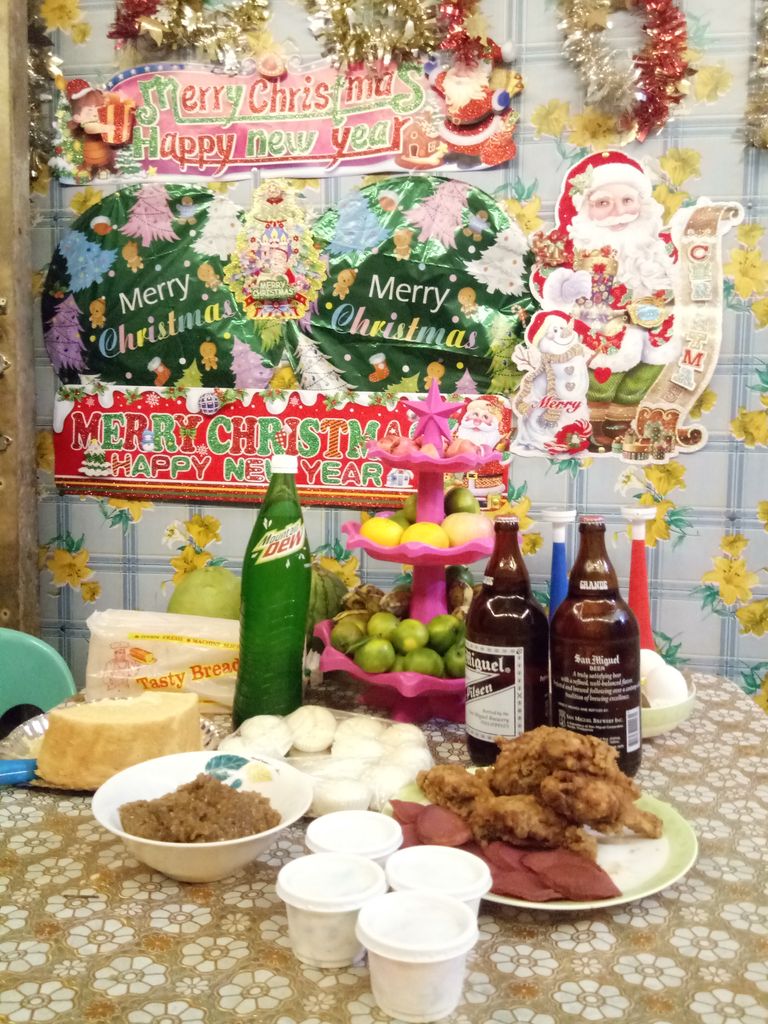Happy New Year Everyone (Welcome 2024🥰)

*In the Gregorian calendar, New Year's Eve, also known as Old Year's Day, is the evening or the entire day of the last day of the year, 31 December. In many countries, New Year's Eve is celebrated with dancing, eating, drinking, and watching or lighting fireworks. Some Christians attend a watchnight service. The celebrations generally go on past midnight into New Year's Day, 1 January.
*In the Philippines, New Year's Eve (Bisperas ng Bagong Taon) is a special non-working holiday (except for 2021 and 2022, where it is a special working holiday), and Filipinos usually celebrate in the company of family or close friends. Traditionally, most households would attend church for year-end services and afterwards, host or attend an abundant midnight feast called the Media Noche. Typical dishes include pancit (a noodle dish meant to symbolize for a longer life) and hamón (dry-cured ham), while lechon (roasted pig) is usually prepared as is barbecued food and various desserts. Some refrain from serving chicken, as their scratching and pecking for food is said to be an unlucky idiom for a hand-to-mouth existence. Many Filipinos also buy firecrackers and fireworks to be used in New Year's Eve, which is believed to drive away any bad luck in the start of the new year.
Many opt to wear new, bright, or colorful clothes with circular patterns, such as polka dots, or display sweets and twelve round fruits in the belief that circles attract money, while candies represent a sweeter year ahead. Several customs must be done exactly at midnight: scattering coins to increase wealth in the coming year, jumping to increase height, or the Spanish custom of eating twelve grapes, one for each month of the year. Filipinos also make loud noises by blowing on cardboard or plastic horns called torotot, banging on pots and pans, playing loud music, blowing car horns, or by lighting firecrackers and bamboo cannons. It is an apotropaic ritual, as the din is believed to scare away bad luck and evil spirits.
*Although many Filipinos typically spend their New Year's Eve at their family homes, in some urban areas, many New Year's Eve parties and countdown celebrations are also hosted by the private sector with the help of the local government. These parties, which include balls hosted by hotels, usually display their own fireworks and are also well-attended.

*A time for people to come together and celebrate the end of the year and the beginning of a new one, New Year’s Eve is a holiday that is celebrated on December 31st, the last day of the year. Attending events, dancing, and watching fireworks are common New Year’s Eve celebrations.
*Some people also make resolutions for the new year, which are promises to themselves to make more changes in their lives for the better. It’s a time of joy, hope, and reflection, and is often marked by traditions and customs that vary from culture to culture.
History of New Year’s Eve
The celebration of New Year’s Eve has a history dating back thousands of years. The holiday’s origins can be traced back to ancient civilizations, such as the Babylonians and the Romans, who marked the beginning of the new year with religious festivals and celebrations.
In ancient Rome, new year celebrations occurred on the first full moon in March with the festival of Anna Perenna – the goddess of the year. The festival was a time of feasting and drinking, and people would exchange gifts and make wishes for the new year.
In medieval Europe, the new year was celebrated on March 25th, which was the Feast of the Annunciation. This date marked the start of the new year on the Julian calendar, which was used at the time. The celebration of the new year on this date persisted until the adoption of the Gregorian calendar in the 16th century, which moved the start of the new year to January 1st.
New Year’s Eve as it is celebrated today is largely a modern creation, with many of the traditions associated with the holiday having developed in the 20th century. Despite this, new year celebrations have a rich and varied history that spans many centuries and cultures.
*How to Celebrate New Year’s Eve:
Around the world, New Year’s Eve is observed in a variety of ways, with some people taking part in customs and rituals to mark the end of the old year and the start of the new.
•Attending Parties
Many celebrate New Year’s Eve by attending parties or hosting their own gatherings with friends and family. These parties often involve dancing, music, and other fun events.
•Watching Fireworks
Fireworks displays are a common way to celebrate New Year’s Eve in many countries. These displays are often accompanied by music and other forms of entertainment.
•Making Resolutions
Some people promise themselves they will make positive changes in their life when they set new year resolutions. These resolutions can range from personal goals, such as losing weight or exercising more, to broader goals, such as helping others or becoming more environmentally conscious.
•Spending Time with Loved Ones
New Year’s Eve is often seen as a time to reflect on the past year and spend time with loved ones, so many choose to spend the holiday with family and friends, either at home or by traveling to be together.
•Participating in Cultural Traditions
Different cultures have their own customs associated with New Year’s Eve. For example, in many Latin American countries, people celebrate by eating grapes, one for each chime of the clock at midnight. In Japan, people celebrate by visiting temples to pray for good luck in the new year. Many people also participate in the tradition of “hatsumode,” which involves visiting a shrine on the first day of their new year.
•The New Year’s Eve Ball Drop
One of the most iconic New Year’s Eve traditions is the New Year’s Eve ball drop in Times Square, New York City. Every year, a large crystal ball is lowered from the top of a flagpole at the stroke of midnight, signaling the ringing in of the new year. This tradition has been taking place in Times Square since 1907.
*Have A Wonderful Monday To All Of Us!🤗😍
HAPPY NEW YEAR! WELCOME 2024🙏😇❤️
THANK YOU FOR ALWAYS SUPPORTING MY BLOGS!💖🥰
Follow us on X at: https://mobile.x.com/BlurttribeC